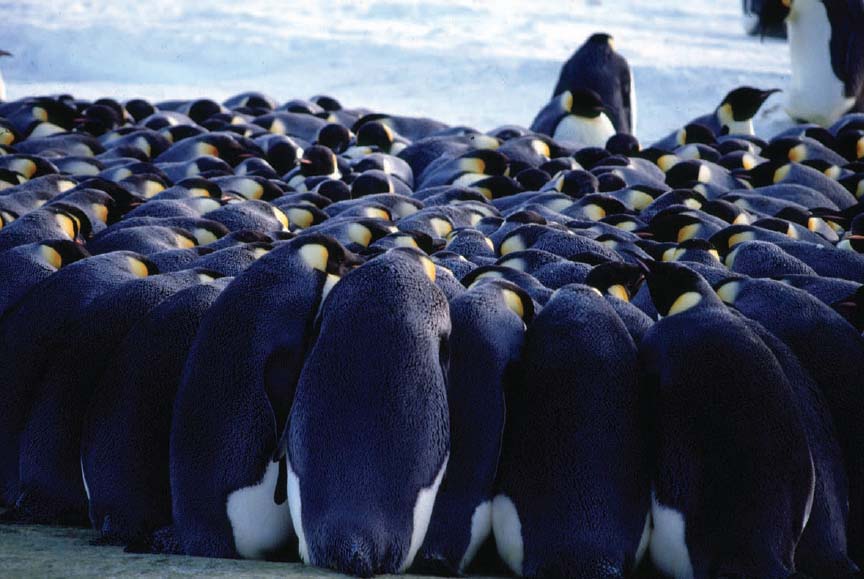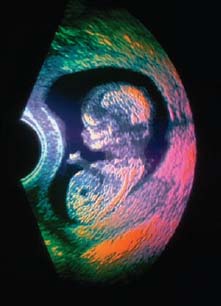
How, then, does a penguin find its mate among the huddled thousands?
The answer is in this lesson.
After diving into the water and eating, an emperor penguin must crawl back onto its home ice flow and return to its mate. In the winter, however, that mate can be anywhere among thousands of penguins huddled tightly together to avoid freezing in the harsh weather of the Antarctic, where temperatures can be −40°C and wind speeds 300 km/h. Besides, penguins all look about the same, even to other penguins, and so a penguin cannot visually recognize its mate.

Fig. 17-1 This image of a 6-month-old fetus is made with ultrasound (which has a frequency above your hearing range).
What Is Physics?
The physics of sound waves is the basis of countless studies in the research journals of many fields. Here are just a few examples. Some physiologists are concerned with how speech is produced, how speech impairment might be corrected, how hearing loss can be alleviated, and even how snoring is produced. Some acoustic engineers are concerned with improving the acoustics of cathedrals and concert halls, with reducing noise near freeways and road construction, and with reproducing music by speaker systems. Some aviation engineers are concerned with the shock waves produced by supersonic aircraft and the aircraft noise produced in communities near an airport. Some medical researchers are concerned with how noises produced by the heart and lungs can signal a medical problem in a patient. Some paleontologists are concerned with how a dinosaur’s fossil might reveal the dinosaur’s vocalizations. Some military engineers are concerned with how the sounds of sniper fire might allow a soldier to pinpoint the sniper’s location, and, on the gentler side, some biologists are concerned with how a cat purrs.
To begin our discussion of the physics of sound, we must first answer the question “What are sound waves?”
Leave a Reply